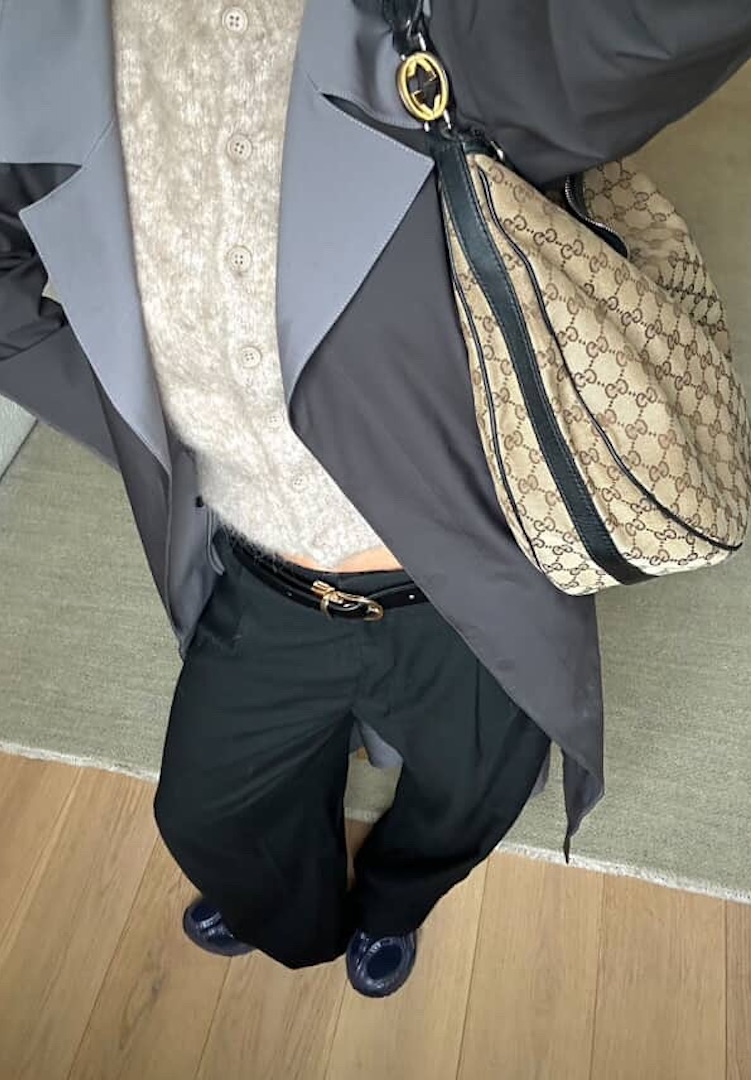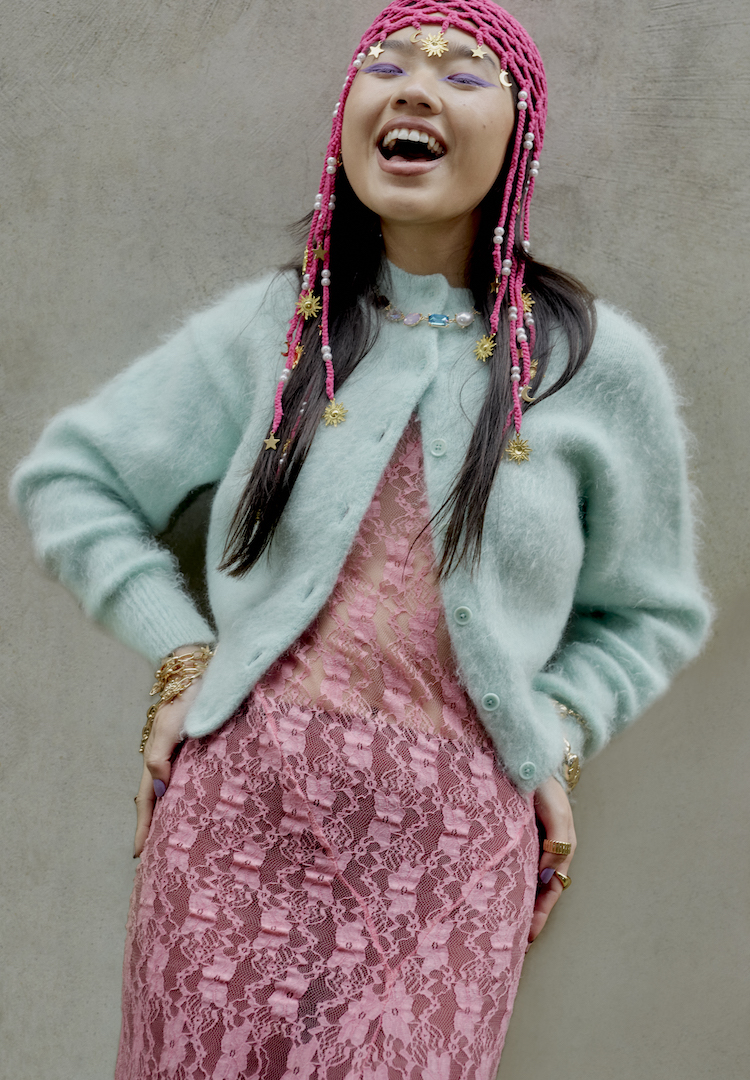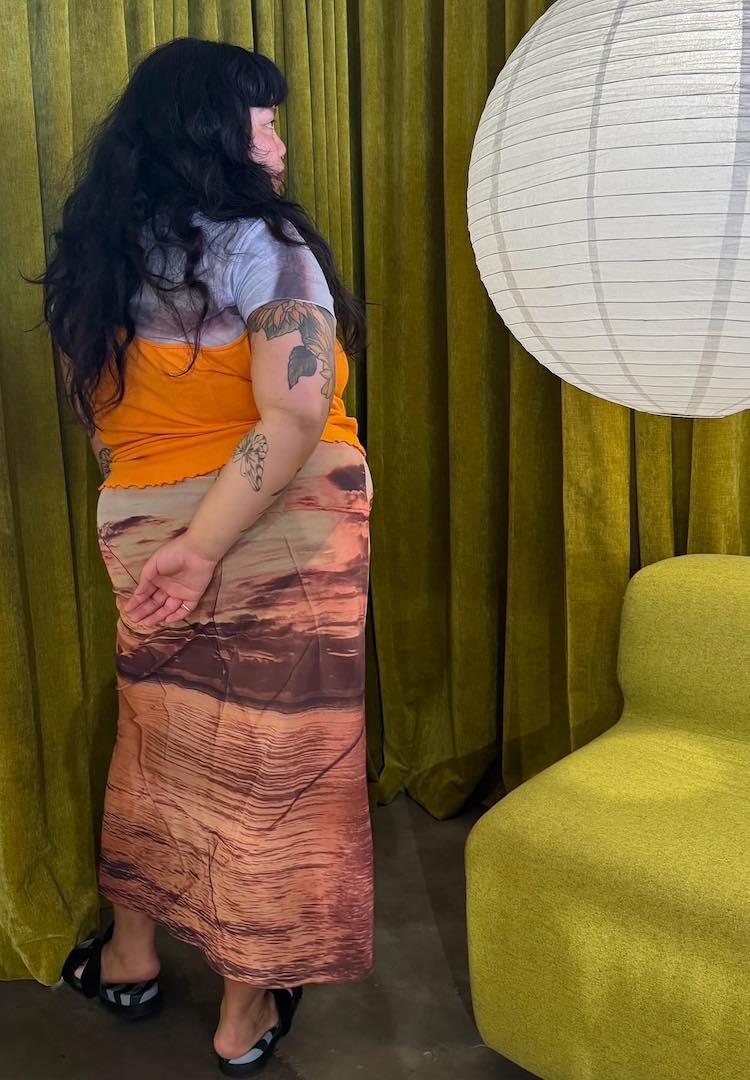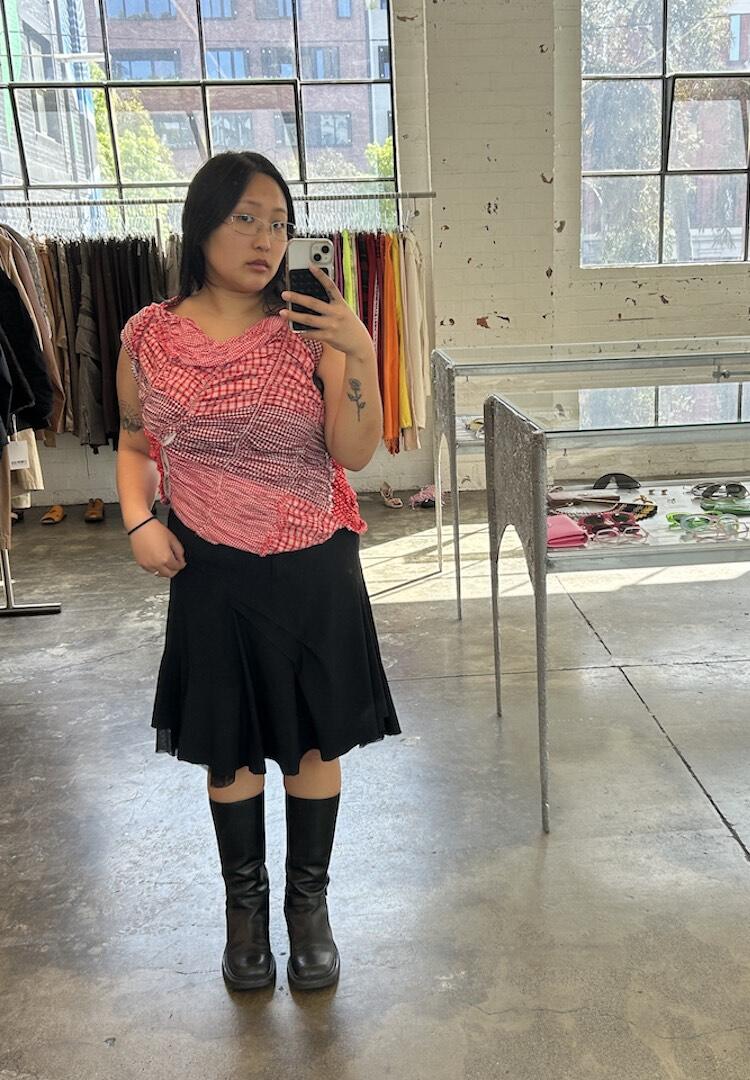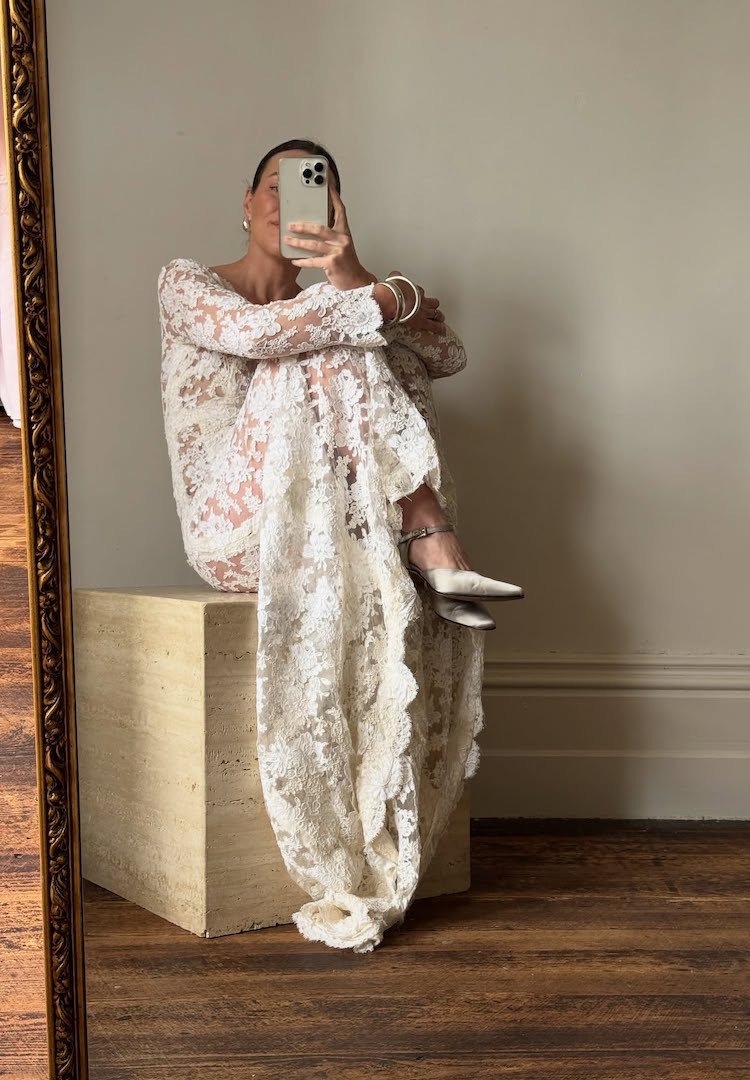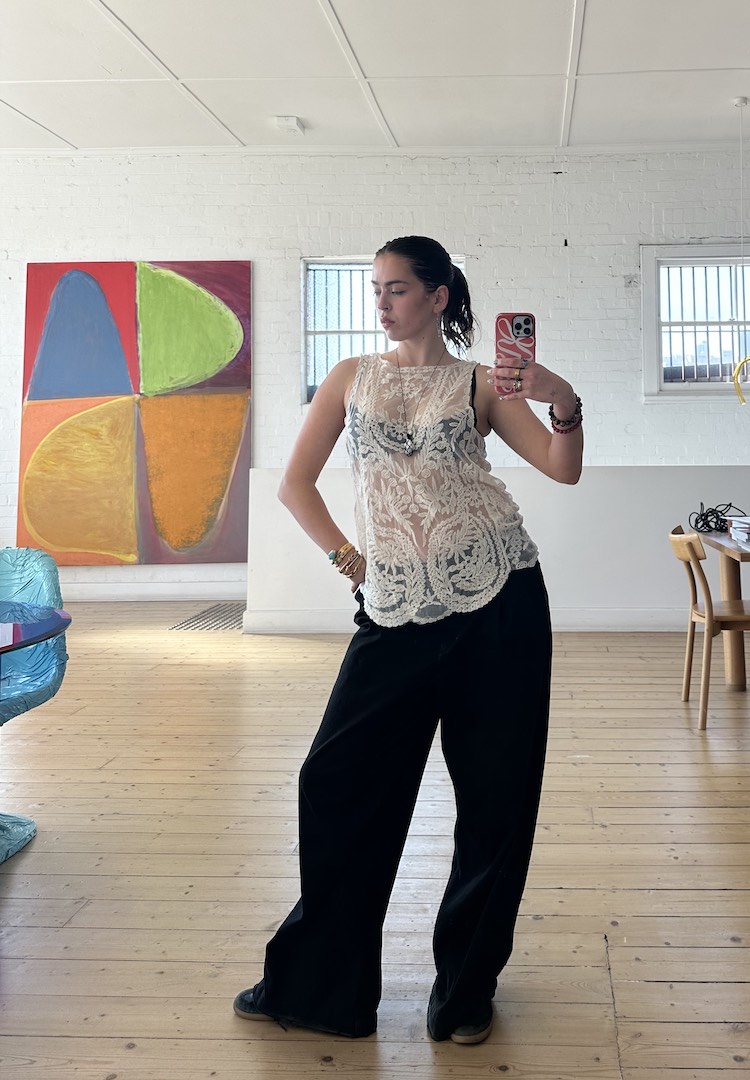A fashion editor’s guide to spring cleaning your wardrobe without getting overwhelmed
IN PARTNERSHIP WITH EBAY
PHOTOGRAPHER – CATHY MARSHALL
STYLIST – MOLLY JOHNSTONE
MAKEUP – MEG McCONVILLE
MODEL – VICKY @ STONE STREET AGENCY
WORDS BY CAIT EMMA BURKE
How to make a wardrobe reset a stress-free experience.
I like to think of my wardrobe as a living, breathing thing, almost like a plant of some sort. It needs to be regularly tended to for the pieces in it to last the distance – think mending, dry cleaning and reorganising. And much like a plant requires regular pruning, wardrobes need frequent culls to be at their most functional.
As a fashion editor who’s worked in the industry for over a decade, I’ve learnt how to spring clean my wardrobe without succumbing to the overwhelm that often accompanies the task.
While deciding what to sell and donate is a big part of the process (more on that soon), where you choose to sell plays a pivotal role too. After much trial and error, I’ve discovered that a combination of IRL consignment stores and selling on eBay results in the easiest and most successful selling experience. Below, I share my hard-won tips and tricks to make your next wardrobe clear out as stress-free as possible.
Getting clear on your personal style
As we age, what we need from our wardrobe changes. Perhaps we’ve gained weight or started a new job that requires a more corporate aesthetic, or maybe we’ve had a bit of a style overhaul. When spring cleaning your wardrobe, you want to assess what’s working with the current iteration of your style, and what really isn’t. To do this, creating a Pinterest board that has outfits similar to ones you actually wear, as well as outfits you’d like to wear but currently don’t, is a great starting point.
Once you’ve curated your board, it becomes easier to see style themes jumping out at you. Perhaps you notice that lots of the outfits you’ve pinned feature stripes or navy, or that you’re particularly drawn to vibrant pops of colour. Use this intel when deciding what to keep and what to get rid of.
Don’t rush it
I like to set aside a block of time on the weekend to do my wardrobe spring clean. I light a candle, pop on an engrossing podcast and get to work. You really don’t want to rush through the process, because you might end up making decisions you regret. I always try to do the clearout on a Saturday and then list my items on eBay on a Sunday. It gives me a day to reflect on whether I’m genuinely ready to part with the items.
Working out what to sell and donate
When doing a wardrobe spring clean, I’ll first put all my out-of-season clothing and accessories to one side. If it’s spring or summer, you obviously won’t be reaching for your jumpers and coats much, so it’s best to wait until autumn or winter to assess what to keep and cull. Once the out-of-season clothes are out of sight, there are a few critical questions I ask myself when I’m deciding what to sell and donate.
Firstly, I’ll assess how often I’ve worn the piece in the last few months. If it hasn’t been worn at all and I feel sure that it’s time for it to find a new home, I’ll add it to a large Ikea bag. I put everything that’s culled in this bag initially, and from there I decide whether they’re going to be listed on eBay, taken to an IRL consignment store, repaired or donated to my local op shop.
If I feel a twinge of worry that I might one day regret selling the item, I’ll hang it on the outside of my wardrobe for the next week. Sometimes we don’t wear something simply because it’s shoved behind a rack of heavy coats, or stuffed into a bottom drawer. Putting it in your line of sight each day when you’re getting dressed means you’ll really take into account whether it’s a piece that works with how you currently dress.
Now, the age-old question: how do you decide what’s worthy of selling, and what needs to be donated? I take into account a few factors – the condition of the item, whether it has another life in it yet, what the brand is and whether I can envisage a buyer for it. If the item is lower quality, in well-worn condition and doesn’t seem likely to sell, off it goes to the op shop.
The pieces I choose to keep and sell are generally made from higher-quality fabrics, ones that don’t have a tendency to tear, pill and pull. It’s also good to do your research. I always look to see how other eBay sellers are pricing similar items and brands, and whether there seems to be much interest and demand for them. This will also help inform how I set my prices, too.
Listing your high street pieces can be worth it, though
Often, people who work in the fashion industry might advise you to toss or donate your cheaper fast fashion or high street pieces instead of reselling them. But unlike some resale platforms where buyers are only really looking for high end designer items, on eBay there’s a diverse array of buyers, and many of them are searching for more affordable high street labels.
Another factor to keep in mind is that by listing your items on eBay, you’ll be reaching millions of buyers through eBay’s global reach and community. Personally, I’ll take any opportunity I can to increase the chances of my pieces selling.
Streamline the selling process
Now we’re at the final part of the process – the part where you get to give your pre-loved items a second life and your wallet a much-deserved cash injection. Getting a listing live on eBay is a breeze as the platform uses artificial intelligence to help users write their listings. eBay’s also collated a list of ways to describe your item’s condition here, so if you’re unsure, it’s worth reviewing.
Making sure you take photos in good lighting and write accurate and honest descriptions is key to making a sale, too. You can also save time (and money) by purchasing your Australia Post and Sendle labels on eBay. You can print labels for multiple orders at once and the address details will be automatically added, or opt for printer-free sending with Sendle and have a courier come and pick up your parcel, to save you a trip to the post office. Using eBay’s postage labels also means the platform will calculate the cheapest shipping option for your location, and your tracking details will be automatically uploaded to eBay. Now all that’s left is to watch the sales roll in. Happy selling!
This story was originally published on August 23, 2024.
To take the next step in your wardrobe reset, head to eBay.

